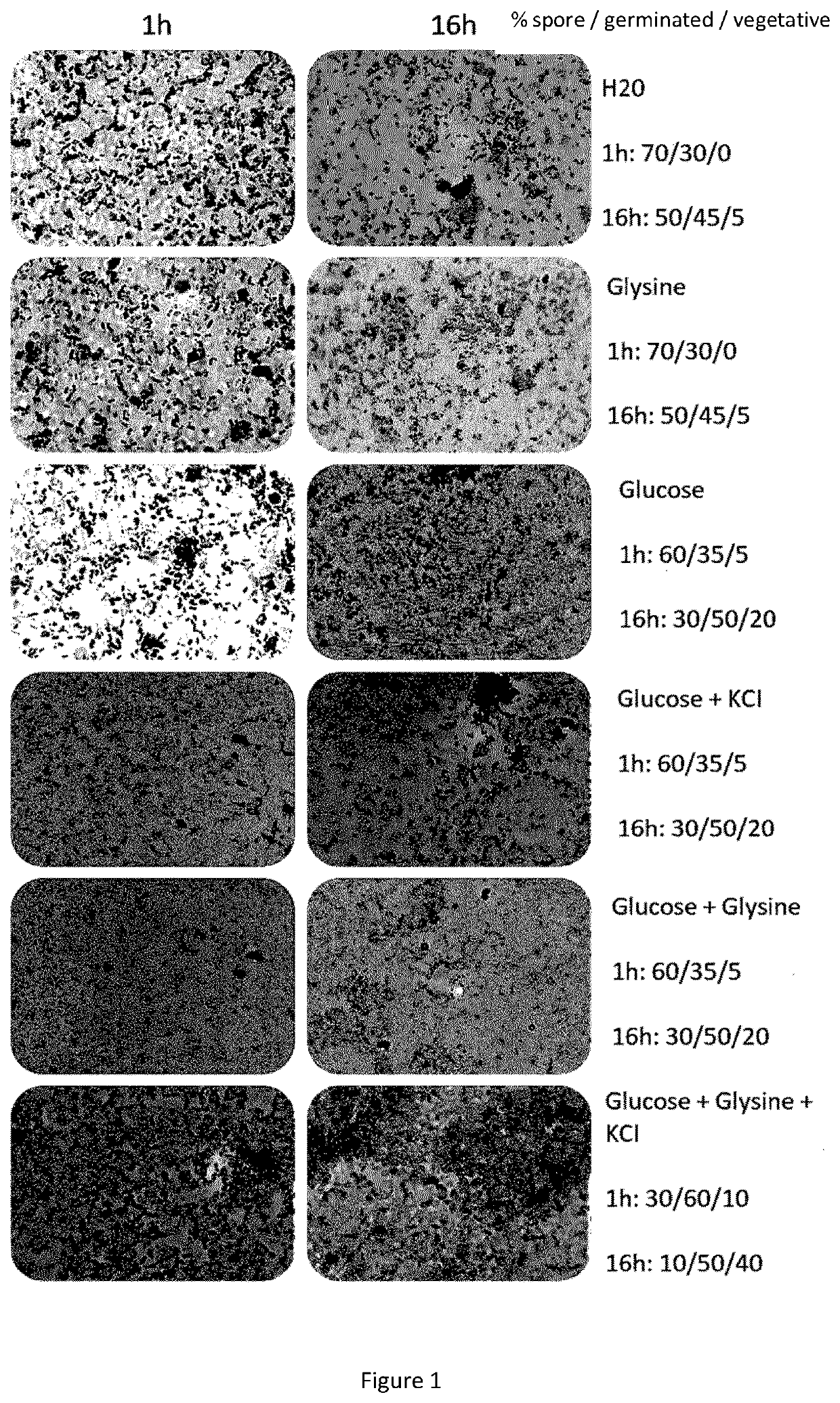Bacterial preparation, a method for preparing a cleaning solution, a cleaning solution, and a method for cleaning dirty targets
a technology of cleaning solution and cleaning solution, which is applied in the direction of biocide, detergent compounding agent, liquid soap, etc., can solve the problems of eutrophication in water systems, toxic active agents in cleaning agents, and burden on the environment throughout the entire product life cycle, so as to improve the cleaning effect and remove impurities , the effect of excellent cleaning results
- Summary
- Abstract
- Description
- Claims
- Application Information
AI Technical Summary
Benefits of technology
Problems solved by technology
Method used
Image
Examples
example 1
[0096]It is important for the method and / or the cleaning solution of the invention that the bacteria have time to germinate or to develop into vegetative before the cleaning step. Tests were performed whereby the percentage of the bacteria present in the solution was measured: spore / germinated / vegetative bacteria. In the tests water was used, which had been purified using reverse osmosis.
[0097]The performed measurements and their results can be seen in Table 1. FIG. 1 also shows the results of the measurements.
Ratio %Ratio %Spore / germinated / Spore / germinated / TestSolutionvegetative 1 hvegetative 16 h1H2O70 / 30 / 050 / 45 / 5 2H2O + glycine70 / 30 / 050 / 45 / 5 3H2O + glucose60 / 35 / 530 / 50 / 204H2O + glucose +60 / 35 / 530 / 50 / 20KCl5H2O + glucose +60 / 35 / 530 / 50 / 20glysine6H2O + glucose + 30 / 60 / 1010 / 50 / 40glysine + KCl
[0098]Test 1 is a reference example. In tests 2-6 the bacterial preparation of the invention is used, which comprises bacterial spores as well as bacterial nutrients.
[0099]The results show that the...
PUM
 Login to View More
Login to View More Abstract
Description
Claims
Application Information
 Login to View More
Login to View More - R&D
- Intellectual Property
- Life Sciences
- Materials
- Tech Scout
- Unparalleled Data Quality
- Higher Quality Content
- 60% Fewer Hallucinations
Browse by: Latest US Patents, China's latest patents, Technical Efficacy Thesaurus, Application Domain, Technology Topic, Popular Technical Reports.
© 2025 PatSnap. All rights reserved.Legal|Privacy policy|Modern Slavery Act Transparency Statement|Sitemap|About US| Contact US: help@patsnap.com

